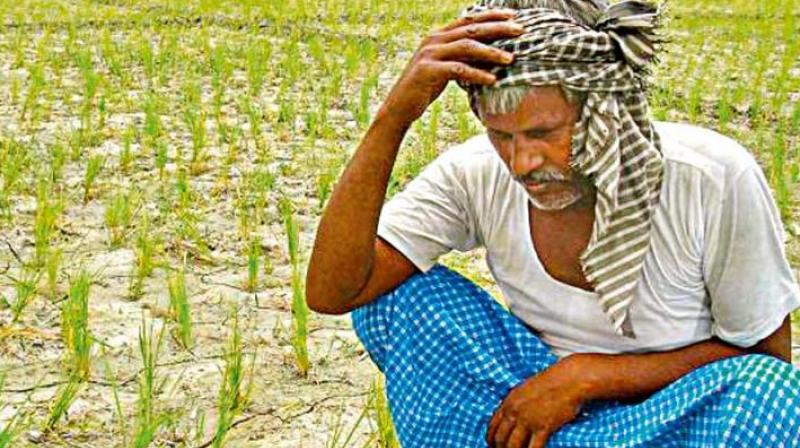Rural indebtedness at 31.4 per cent, Rs 1.03 lakhs per household: NSS

The incidence of indebtedness was higher in rural areas with 31.4 per cent households taking loans in some or other forms while in cities the proportion of such families was 22.4 per cent, says a report.
"The Incidence of Indebtedness (IOI) was about 31.4 per cent among the rural households and 22.4 per cent among the urban households," a report based on the National Sample Survey said.
The report is based on information collected through National Sample Survey (Debt and Investment), during January-December 2013 from 110,800 households in 4,529 villages and 3,507 urban blocks spread over the country. According to the report, Household Indebtedness in India, average amount of debt (AOD) per indebted household was Rs 1,03,457 and Rs 3,78,238 in rural and urban areas, respectively.
Land and building together, both in rural and urban areas, accounted for around 90 per cent of total value of assets at the national level for indebted households as well as for all households. Non-institutional agencies had advanced credit to 19 per cent of rural households, while institutional agencies had advanced credit to 17 per cent households. In cities, institutional agencies played a greater role, advancing credit to 15 per cent of households against 10 per cent by non-institutional agencies.
In rural, the share of debt from institutional credit agencies was 56 per cent against 44 per cent from non-institutional credit agencies. In cities, the share of debt from non-institutional credit agencies was 15 per cent compared to 85 per cent from institutional credit agencies. In rural areas, cooperative societies and commercial banks, together accounted for 50 per cent of the outstanding cash debt, with cooperative societies (24.8 per cent) accounting for a slightly lower share than the Banks (25.1 per cent).
Among non-institutional credit agencies, professional moneylender was found to be the most important source of finance (28.2 per cent) in rural areas. However, about 75 per cent of the "total cash debt" in urban areas was from cooperative societies and commercial banks, their respective shares being 18 per cent and 57 per cent.
In terms of interest, simple rate of interest was predominant rate in practice for both in villages (20.3 per cent) and in cities (13.4 per cent) families. "Interest-free" total cash debt (TCD) outstanding was 8.5 per cent in rural areas and 4.5 per cent in cities. In rural areas, nearly 12 per cent families opted for short-term and medium-term borrowing, whereas 10 per cent of the households availed of long-term loans.
In cities, 12 per cent families opted for long-term borrowing, which was the highest, followed by medium term (8 per cent) and short term (5 per cent). Personal security accounted for the highest share (20 per cent in rural and 12 per cent in urban) among the types of security against loan followed by 6 per cent in rural and 5 per cent in urban against mortgage of immovable property. In the rural sector, the percentage share of debt for business purposes was varying from 11 per cent to 56 per cent among the decile classes.

